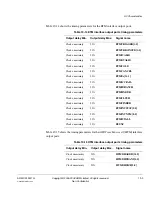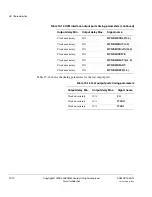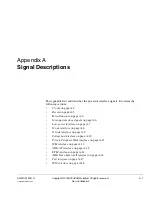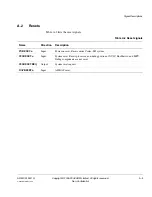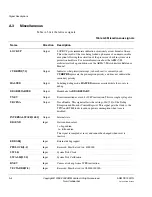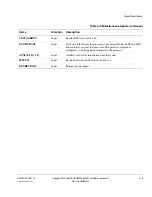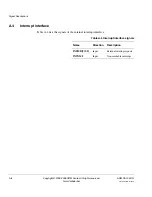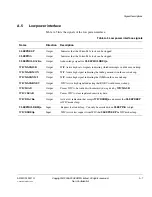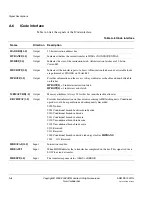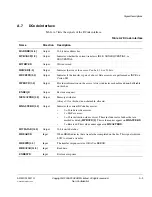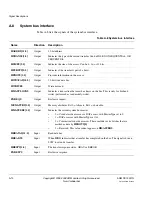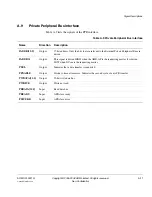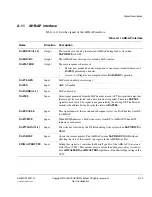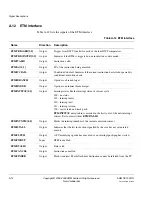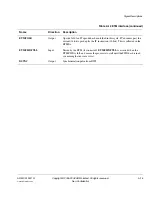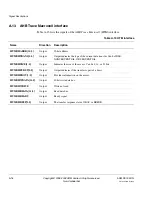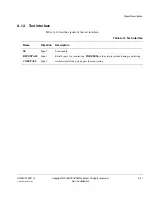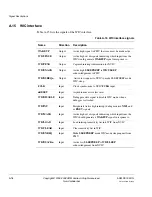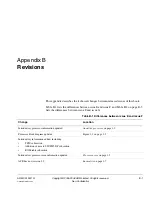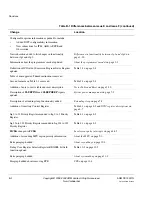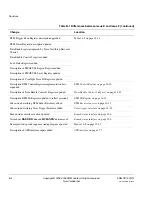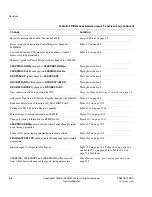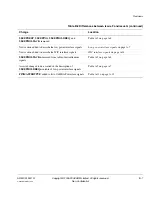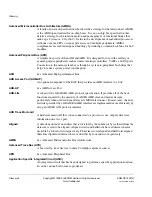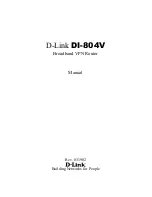
Signal Descriptions
ARM DDI 0337G
Copyright © 2005-2008 ARM Limited. All rights reserved.
A-13
Unrestricted Access
Non-Confidential
A.11
AHB-AP interface
Table A-11 lists the signals of the AHB-AP interface.
Table A-11 AHB-AP interface
Name
Direction
Description
DAPRDATA[31:0]
Output
The read bus is driven by the selected AHB-AP during read cycles when
DAPWRITE
is LOW.
DAPREADY
Output
The AHB-AP uses this signal to extend a DAP transfer.
DAPSLVERR
Output
The error response is because of:
•
Master port produced an error response, or transfer not initiated because of
DAPEN
preventing a transfer.
•
Access to AP register not accepted after a
DAPABORT
operation.
DAPCLKEN
Input
DAP clock enable (power saving).
DAPEN
Input
AHB-AP enable.
DAPADDR[31:0]
Input
DAP address bus.
DAPSEL
Input
Select signal generated from the DAP decoder to each AP. This signal indicates that
the slave device is selected, and a data transfer is required. There is a
DAPSEL
signal for each slave. The signal is not generated by the driving DP. The decoder
monitors the address bus and asserts the relevant
DAPSEL.
DAPENABLE
Input
This signal indicates the second and subsequent cycles of a DAP transfer from DP
to AHB-AP.
DAPWRITE
Input
When HIGH indicates a DAP write access from DP to AHB-AP. When LOW
indicates a read access.
DAPWDATA[31:0]
Input
The write bus is driven by the DP block during write cycles when
DAPWRITE
is
HIGH.
DAPABORT
Input
Aborts the current transfer. The AHB-AP returns
DAPREADY
HIGH without
affecting the state of the transfer in progress in the AHB Master Port.
FIXMASTERTYPE
Input
Setting this signal to 1 overrides the MasterType bit of the AHB-AP
Control and
Status Word
(CSW). This ensures accesses from the debugger is always issued as
0x1
on
HMASTERD
and
HMASTERS
regardless of the MasterType setting in the
CSW.

